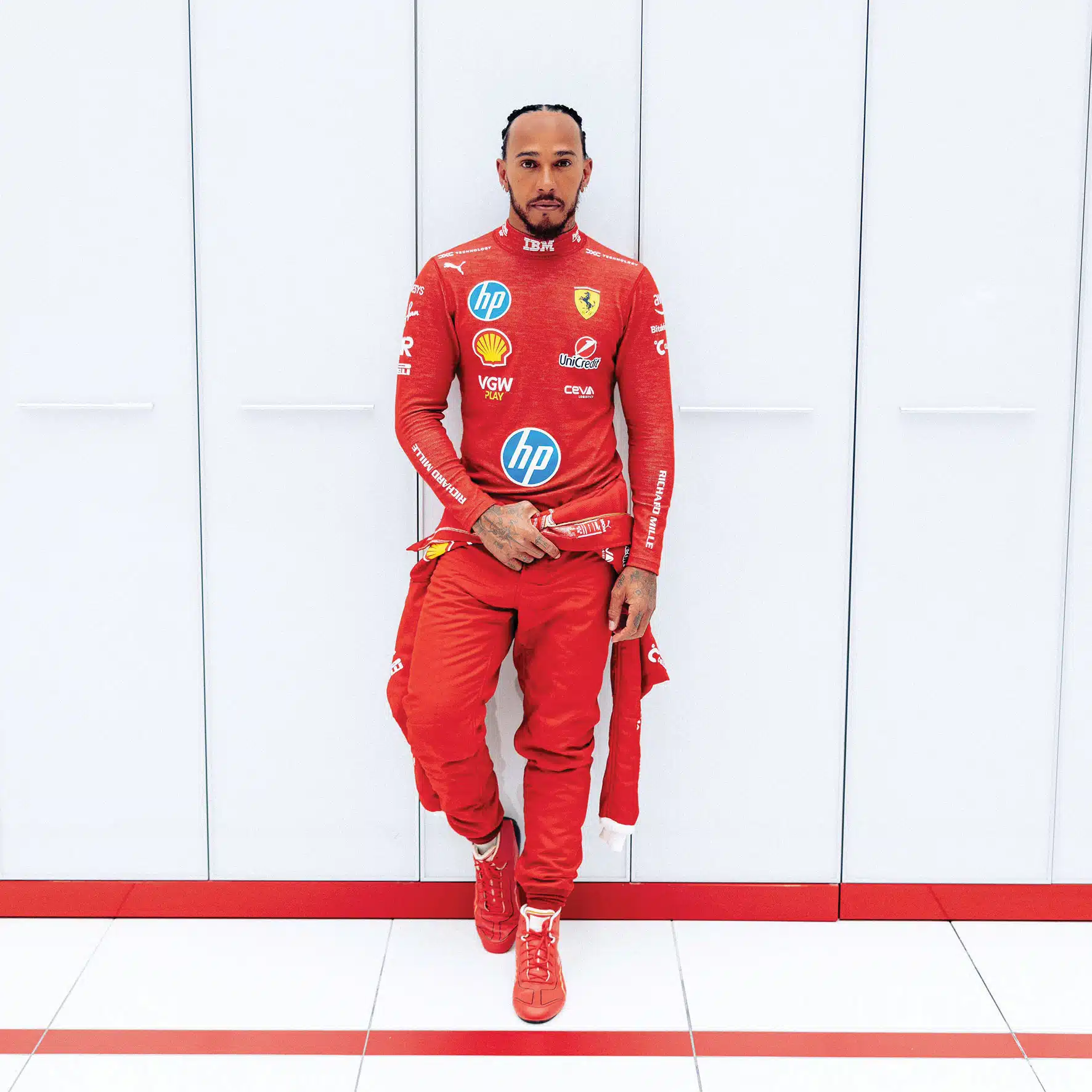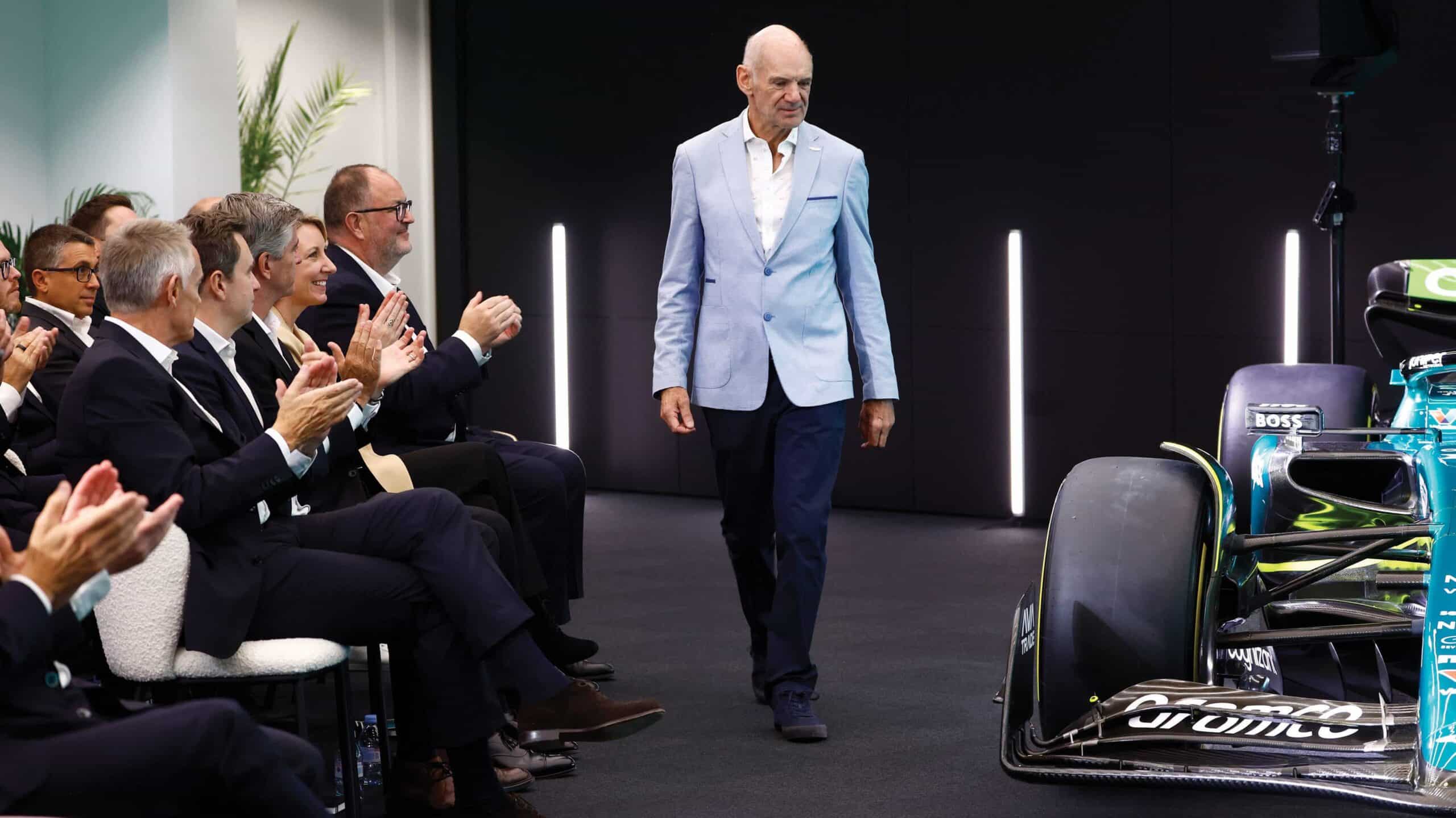Could 2025 be the best F1 season… Ever?
Formula 1 in 2025 has the potential to be the most exciting year on record. As F1 teams gear up for round one in Australia, Mark Hughes provides a masterclass of what-if permutations
Getty Images
What’s the most intriguing question hanging over the 2025 season? Lewis Hamilton’s fortunes at Ferrari, perhaps? Forty years old as he joins the sport’s highest-profile team and off the back of a season in which he was, for the first time in his long career, outperformed by a team-mate. Paired now with Charles Leclerc, a man with a reputation as perhaps the fastest of all over one lap and 13 years Hamilton’s junior. But this is Lewis Hamilton and this is Ferrari. Magic can happen. But will it?
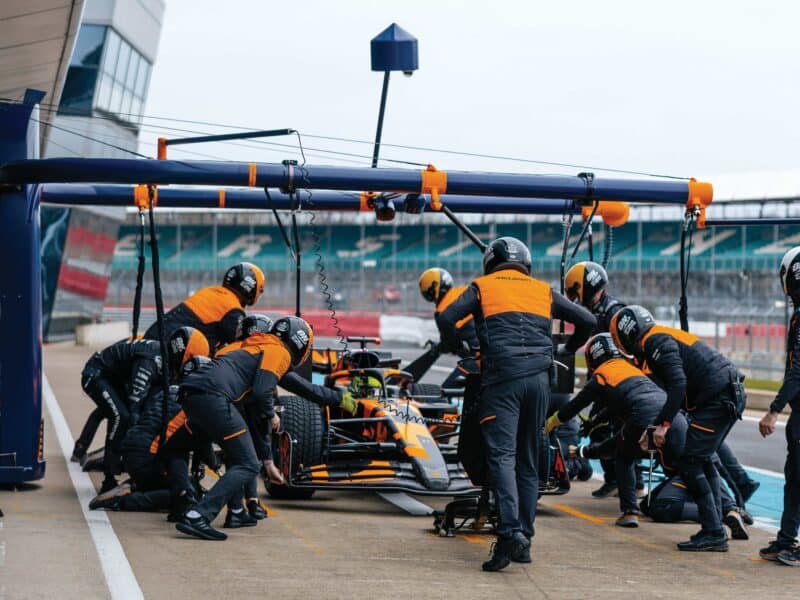
McLaren ended 2024 with F1’s quickest car
Or is the bigger intrigue whether Red Bull can prosper despite the loss of Adrian Newey and bounce back after a distinctly sketchy second half of the ’24 season? And if not, what will that mean about the partnership with Max Verstappen?
Or could both those stories be dwarfed by an 18-year-old rookie, Kimi Antonelli, drafted straight into Mercedes as Hamilton’s replacement? There’s a lot of cynicism from observers inside the sport and out about Toto Wolff’s bold decision to put such an inexperienced driver under the spotlight of a top team. But Wolff is among those who believe Antonelli is something extraordinary, the new Verstappen in waiting. Is he? To truly find out, Mercedes needs to provide him and team-mate George Russell with a fully competitive car. Can it, at its fourth and final attempt under these regulations?
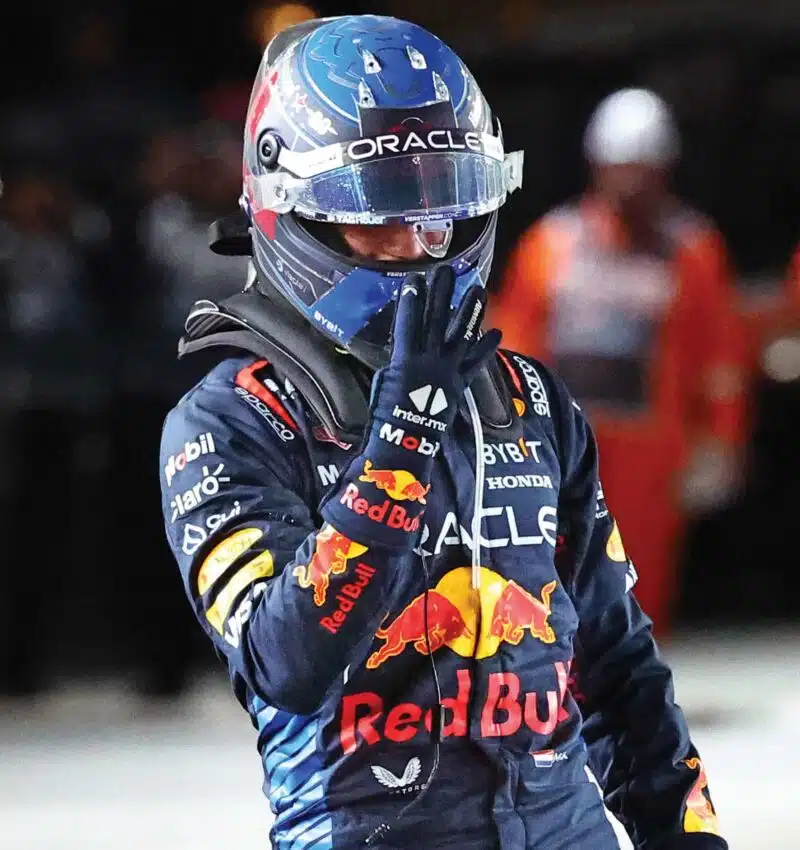
Questions are being asked about Max Verstappen’s future with Red Bull
Grand Prix Photo
This regulation set has not been kind to the team, but there were occasions last year where it had the fastest car. If those peaks can be hooked together, this should be Russell’s moment, the situation he’s been waiting years for. His setting out his stall at the end of last season in how he will race Verstappen, adamant that he will not be bullied, will not stand down, carries with it thrilling prospects. If the car is quick.
“Wolff is among those who believe Antonelli is extraordinary”
Or will all of the above be rendered meaningless by McLaren, reigning world champion constructors? The team which brought Red Bull’s domination to an end, which fielded the season’s fastest car and did so with such apparent unity and focus. Updates were fewer than on rival top teams but their effectiveness was greater. This was a team which appeared to have a better handle on their development than any of the others. Operationally it was still at times a little unseasoned, unused to running constantly at the front, but with the benefit of that experience, will ’25 see the full flowering of the team? If so, Lando Norris, now used to winning grands prix to the extent that he’s disgruntled when he doesn’t win, will be in a great place.
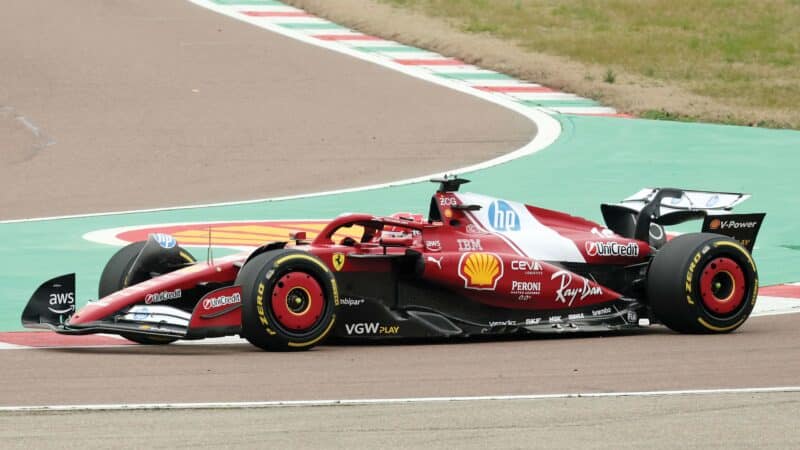
The morning after the F1 75 launch in London, Charles Leclerc was first on track at Fiorano with the new Ferrari SF-25
Getty Images
But his vista may be clouded by the guy in the other McLaren. Oscar Piastri is a tougher cookie than Norris, sniper-like in his moves. But he struggled to match Norris’s incredible single-lap pace in the latter part of last season. Going into his third season Piastri’s status as an elite-level driver is on the line and Norris is one challenging yardstick. Beating him to the world title would be the simplest way of doing that but obviously it’s far easier said than done. Norris, Charles Leclerc, Max Verstappen, Lewis Hamilton, George Russell and maybe even Kimi Antonelli may all prove to be a barrier to that.
“If ’25 starts the way ’24 finished, we’ll have eight guys in competitive cars”
On paper the 2025 season has the ingredients to be something special, given that the end of ’24 was so closely matched between four teams. If ’25 starts the way ’24 finished and McLaren, Red Bull, Ferrari and Mercedes continue to fight each other hard for supremacy, we’ll have eight guys in competitive cars and with the additional intrigue of only one of those teams retaining the same driver line-up as last year.
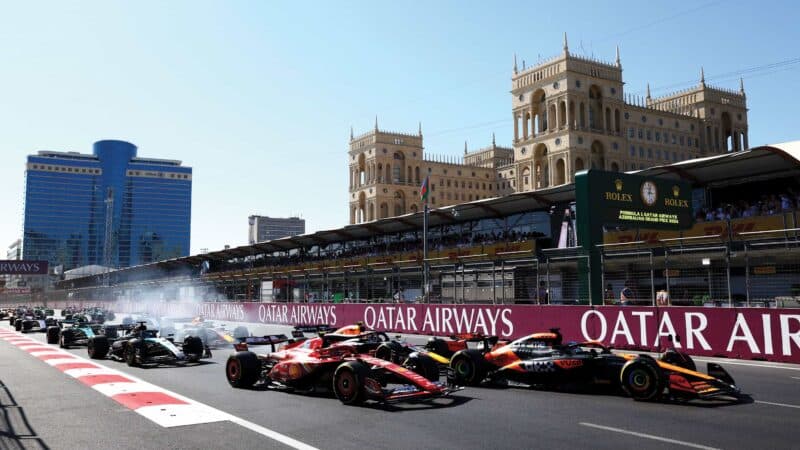
Oscar Piastri, leading, scored his second grand prix win at Baku in 2024; he’s a possible for the title in ’25
Getty Images
As the final year of this formula, with the teams encountering the law of diminishing returns, convergence would be natural. But so often in F1 there’s a jack-in-the-box, a new innovation which renders previous assumptions obsolete. We saw it part-way through last year as McLaren updated its car to include a front wing with a new more-effective way of flexing at high speed – and just like that, Red Bull’s two years of domination was brought to an end.
The flex issue has been the focus of the FIA’s attention over the winter, with the governing body almost in the role of refereeing a split of opinion among the teams. Front wing flex became a much more powerful tool than before because of how it got around the new aerodynamic bottleneck which had developed as the teams became ever-better at running the ground-effect floors super close to the ground without inducing the dreaded bouncing. This increased the downforce substantially but created a severe balance conflict between slow corners and fast. Increasing the flex of the front wing while still having it pass the FIA’s static tests got McLaren out of that hole and thereby made it F1’s fastest car. Mercedes followed suit soon after. But Ferrari and Red Bull did not.
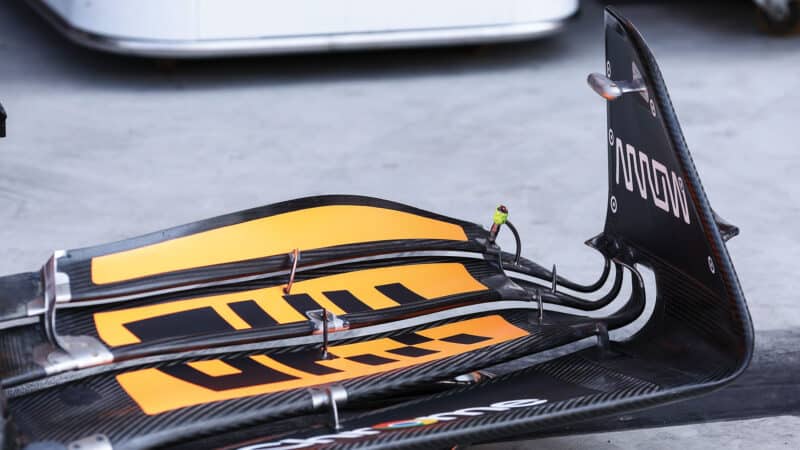
McLaren’s clever front wing arrived midway through the season.
DPPI
The ingenious super-flexi ‘Mohican’ wing design (so called because of their stiff central structure facilitating greater flex at the outer ends at high speeds) allowed you to use a more aggressive flap angle to combat the low-speed understeer but then using the flex to de-power the wing (relative to the rear) at higher speeds, so calming the high-speed oversteer.
Prior to McLaren’s breakthrough in the structural design needed to engender the increased flex, Red Bull had been getting around the balance conflict inherent in this generation of car through better controlled suspension behaviour, particularly at the rear. The matching of their cars’ aerodynamic maps (how much downforce is created at different ride heights, speeds, roll and pitch angles and how they transition to those states) with rear suspension heave and roll rates was incredibly sophisticated. Having (within the super-stiff suspensions required in the ground-effect cars which have such a small ride height range) the suppleness required to match the varying aero balance was probably the root cause of Red Bull’s previous dominance.
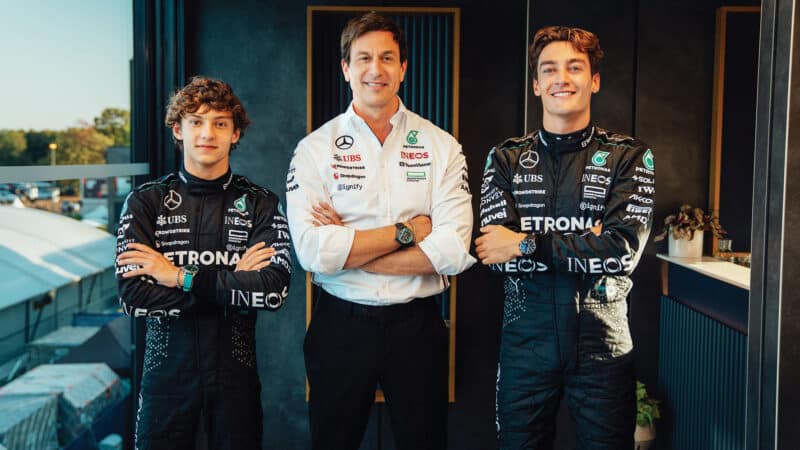
From left: the prodigy Kimi Antonelli, Toto Wolff and George Russell
McLaren’s conceptually much simpler way around the balance conflict rendered Red Bull sophistication almost irrelevant, as Red Bull’s technical chief Pierre Waché confirmed last year. “[Previously] to get a different aero balance as a function of speed, you need some movement of suspension and the softer you are the better that is. Which is good for balance but maybe not for downforce. [McLaren’s] front wing allowed them to have that aero balance change but with a much stiffer suspension.”
“If Verstappen flies to a fifth consecutive title, does he stay put?”
In other words, the flexi wing allowed McLaren to retain a big balance window (between low speeds and high) at higher downforce levels than Red Bull. Add development downforce to the McLaren and it could retain its aero balance. Add it to the Red Bull and it lost that balance (disguised for a time by Max Verstappen’s skills).
Red Bull and Ferrari each believed the McLaren interpretation was not within the regulations and campaigned for a clampdown. But it never came. Not in ’24, anyway. Now, the clampdown has arrived in the form of a new technical directive. A one-third increase in vertical stiffness (as measured statically) has been imposed in an attempt at limiting the flex at speed. This takes effect from the Spanish Grand Prix in June (round 9 of 24). Until then, the ’24 interpretation continues.
How might this effect things? Will Red Bull and Ferrari have spent money on developing McLaren-like flexi wings? If not, they will surely be at a disadvantage for the first eight races. Conversely, will McLaren’s (and Mercedes’) development around the more flexible front wings see them at a disadvantage when the new interpretation finally arrives?
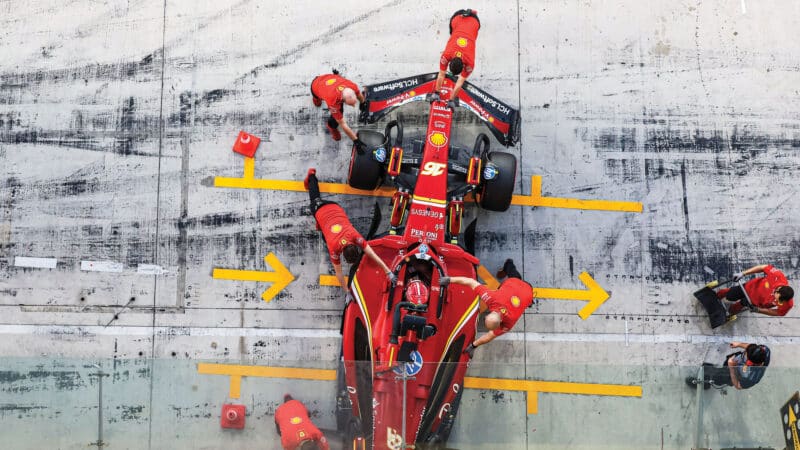
Ferrari is supremely confident for 2025
Getty Images
In turn, the effect aero-flexible front wings have on the balance of the cars impacts directly upon the performance of the drivers. Hamilton has not enjoyed the ground-effect generation of Mercedes, feeling they restricted his natural driving style, which is to use the brakes very aggressively to achieve early rotation into a corner. Verstappen in turn has hated the Red Bull’s combination of sharp turn-in (as that big front wing generates ground effect as the car dips) with mid-corner understeer (as the ground effect reduces as the brakes are released and the car levels out). Ferrari eventually achieved an acceptable balance, but at the expense of high-speed downforce. McLaren had the best combination of downforce and good balance through the speed range. How might these traits have been mixed by the regulation change and by the ongoing development of each car?
Hamilton has reportedly been very happy with how the 2023 Ferrari he tested at Barcelona drives. He feels it gave him a more direct sensation of what it is doing than the Merc. Which bodes well for a Hamilton revival. Certainly its slow corner neutral-to-oversteer balance which Leclerc has so revelled in at Ferrari for the last three years would seem to be a good match for Hamilton’s preferences. But how different might the 2025 Ferrari feel from its two-year-distant ancestor?
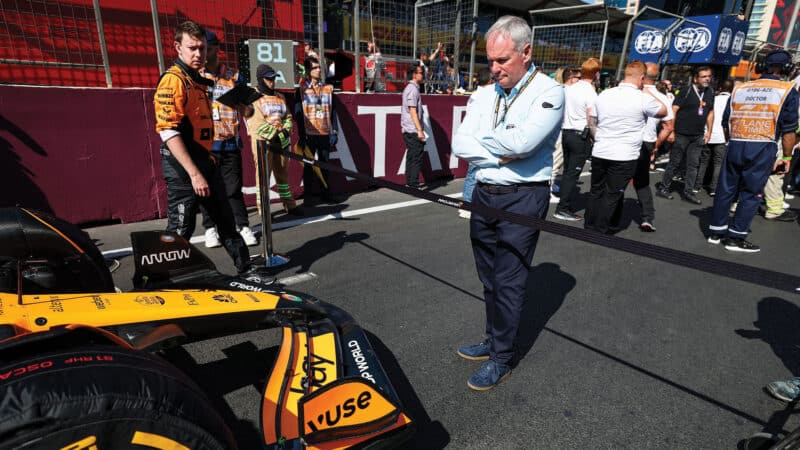
An FIA steward checks the McLaren front wing in Baku
DPPI
In the final season of this regulation set, Ferrari is expected to converge to the pull-rod front suspension type which has been favoured by Red Bull and McLaren (but not Mercedes) in reaction to the aerodynamic requirements of these regulations. How significant might this be? Perhaps not at all. It’s been done for aerodynamic reasons and enables a better airflow to the back of the car, albeit at some mechanical expense. But what if Ferrari’s attempt at eradicating its high-speed downforce shortfall loses it its excellent low-speed balance? In turn, how would that impact upon what Leclerc and Hamilton can exploit from the car? There are confident noises emanating from Ferrari that it has created a car which builds on its former strengths and eradicates its weaknesses – and that it’s gunning for a title with more confidence than at any point in the last few years. Might this car allow Hamilton to dismiss the march of time?
Will Red Bull’s former mastery of matching suspension and aero traits come to reacquire its former importance? In which case, might its dominance return, especially from Spain onwards? Or will the others have caught up with that sophistication? Was Newey the vital link of understanding between those mechanical and aero traits? If that all turns out badly, what impact will it have upon Verstappen’s future plans? With Newey, inset, and Honda working together at Aston from ’26, might he not want to join that party? But if he flies to a fifth consecutive Red Bull title, does he stay put? Or move on regardless? Meantime, as a side issue, will his new team-mate Liam Lawson – feisty in battle and super confident – fare any better alongside Verstappen or be crushed by the comparison as surely as Sergio Pérez, Alex Albon and Pierre Gasly before him?
There are many supplementary questions. Can Newey’s influence make a quick car out of a design made before he joined Aston Martin? What could Fernando Alonso do with it? What about Williams and Carlos Sainz and how does Albon fare there? Flavio Briatore’s Alpine was showing great progress under the technical leadership of David Sanchez at the end of last year. How far can that recovery go? Does Ollie Bearman retain his superstar-in-waiting status at Haas? Rookie Gabriel Bortoleto is touted as a future champion. What will the Sauber allow him to show? Isack Hadjar lapped faster than his ’25 Racing Bulls team-mate Yuki Tsunoda in the Bahrain test at the end of ’24. How does that play out?
Then consider this: the most important question of all might turn out to be none of the above.
